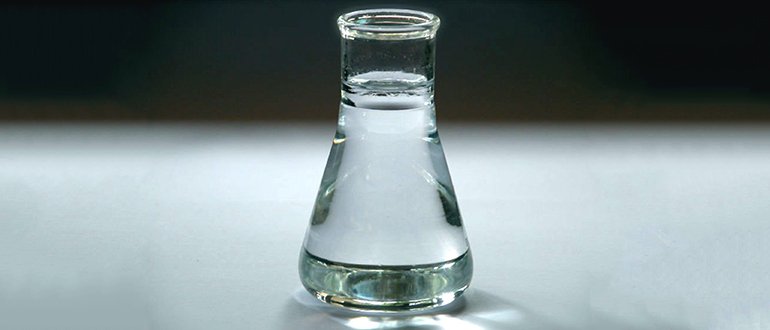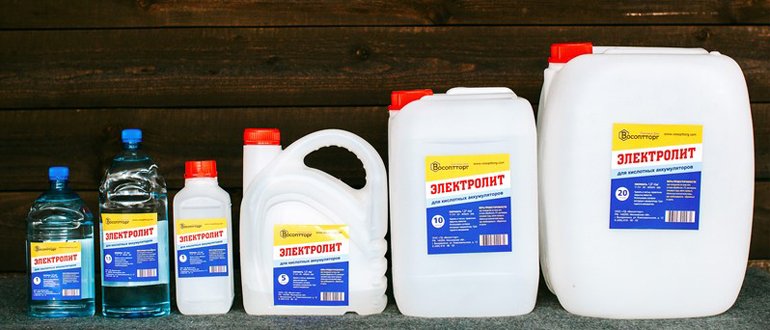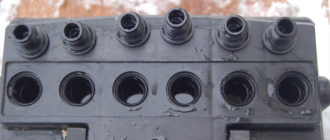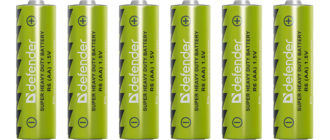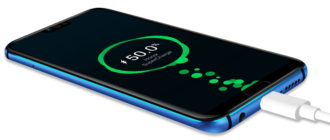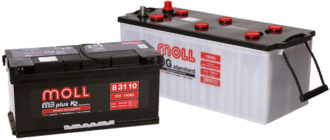Without electrolytes, rechargeable power sources cannot operate. There are several basic types of substances that are most commonly used in modern devices of this type. About what types of electrolytes exist, as well as how you can prepare the mixture for pouring into the battery, will be described in detail in this article.
Content
What is electrolyte and what is it for?
An electrolyte is an acid or alkaline solution that takes part in a chemical reaction. During battery charging, the density of the conductive fluid rises, so this parameter can be used to fairly accurately judge the degree of charge of the battery.
It is important not only the presence of conductive fluid in the battery, but also the quality of the mixture. If the preparation of a solution of sulfuric acid or alkali with water was carried out in violation of the technology, the battery will be unstable or will completely fail for a short time.
Types of Electrolyte
Electrolytes are of two main types:
- Acid.
- Alkaline.
Acidic mixtures with distilled water are mainly used in batteries used to start a car engine. Such substances can be purchased in specialized stores or prepared independently. At the factory, such mixtures are made according to GOST; at home, you can also quite accurately observe the necessary proportions when mixing acid with water.
The alkaline mixture can be prepared using various active substances, but the most commonly used calcium-lithium base, which is diluted with the required amount of distilled water.
Acid electrolyte
Acidic conductive fluid can be prepared from concentrated sulfuric acid itself.
Composition. The composition of an acid electrolyte includes two substances:
- Acid.
- Distilled water.
Sulfuric acid, which is practically odorless and does not evaporate at room temperature, is most often used as the main substance. In terms of electrical conductivity and other important characteristics, this element is also most suitable for pouring into lead batteries.
Features of chemical properties. The main characteristic of an acid battery is its density. This parameter may vary significantly depending on the degree of charge of the battery, but should not be lower than 1.26 and above 1.30 g / mm3.
The freezing temperature of the battery fluid directly depends on its density, but if this indicator drops below minus 75 degrees Celsius, then the conductive liquid even in a fully charged battery will turn into ice.
Sulfuric acid is a caustic substance, so when working with this substance, personal protective equipment should be used. At a minimum, safety glasses and rubber gloves should be used.
Application. Acidic electrolyte is mainly used in lead batteries. Such current sources are used as starter batteries in cars and trucks.
How to cook. To cook yourself you will need the following materials and tools:
- Acid-resistant cookware and spatula for stirring the solution.
- Distilled water.
- Rechargeable sulfuric acid.
Before performing work, care must be taken about safety. To protect yourself from possible negative effects, you need to prepare:
- Protective glasses.
- Acid resistant apron.
- Rubber gloves.
- Soda to neutralize the effects of acid.
The cooking process is carried out in the following sequence:
- The required amount of water is poured into the tank.
- Concentrated acid is added in a thin stream.
- Stir the resulting solution with a glass or plastic spatula.
- Allow the mixture to stand for 12 hours.
To prepare 1 liter of a mixture of the required density, 0.781 liters of water and 0.285 liters of sulfuric acid will be required.
Alkaline electrolyte
Alkaline electrolyte has its advantages and disadvantages, but such a composition is also widely used as a conductive fluid in portable power sources.
Composition. Caustic potassium or caustic sodium can be used in the alkaline type battery electrolyte. To improve performance, lithium compounds are also added to the alkaline base. To give the mixture fluidity, it is diluted with distilled water.
Features of chemical properties. All alkaline batteries are strong bases that are active against many metals and acids.
As a result of chemical reactions with acids, salt and water are formed. Alkaline solutions also undergo hydrolysis. The listed chemical properties make it possible to use this type of electrically conductive liquid to accumulate electricity in the battery.
Application. The use of alkaline solutions is reduced mainly to refueling batteries. Such electric current sources are used in various devices, electric forklifts, and also as starter batteries for military vehicles.
How to cook. To prepare alkaline electrolyte certain rules should be followed. First of all, you need roomy dishes made of alkali-resistant material. The cooking process is as follows:
- The required amount of distilled water is poured into the tank.
- Dry alkali is carefully poured into the liquid. Then the mixture is stirred with a plastic spatula.
- A density analysis is performed. If necessary, add a dry mixture or water.
- The solution settles for 3 hours.
- The electrolyte is poured into another tank, trying to prevent the sediment from rising from the bottom of the tank.
If all the work has been done according to the instructions, then you can get a high-quality electrolyte, which is then poured into batteries of the appropriate type.
Correction Electrolyte
During operation of the serviced batteries, too much distilled water may be accidentally added to the banks, which will lead to a drop in the density of the conductive liquid below the permissible level.
This problem is solved by the preparation and filling of a high density correction electrolyte.
Composition. The composition of the correction solution does not differ from the main electrolyte. For example, for lead acid batteries, it is also necessary to dilute sulfuric acid in distilled water, but the proportions will be slightly different (to obtain 1 liter of electrolyte, you must adhere to a ratio of 0.650 liters of water and 0.423 acid).
Features of chemical properties. The chemical properties of the correction electrolyte practically do not differ from the main conductive fluid. Physical parameters may vary slightly (lower freezing temperature).
Application. The only use of corrective electrolyte is to restore the optimal concentration of acid or alkali inside the battery cans.
How to cook. To prepare the corrective composition, it is necessary to dilute the pure basic substance in distilled water, but it needs to be added a little more than in the production of ordinary electrolyte.
The sequence of operations is also no different from the standard scheme of working with caustic substances for the preparation of conductive liquid for the battery.
What electrolyte is poured into which battery
If the wrong electrolyte is poured into the battery, the battery will be completely disabled. The type of battery, as a rule, is indicated on the body of the product, so it is not difficult to establish whether a power source belongs to a certain category.
If the label is missing, then you can take a small amount of electrolyte and using tests to determine its composition. Sulfuric acid-based electrolytes are poured into lead-acid batteries. For alkaline power sources, KOH and NaOH solutions can be used.
When electrolyte is added to alkaline devices, the chemical formula of the base used must also be precisely determined. You can distinguish one alkali from another by the color of the flame. If you add KOH to the fire, then the color of the fire changes to red-violet, NaOH - lights up with a yellow glow.
Have questions or have something to add? Then write to us about it in the comments, this will make the material more complete and accurate.

